
- Pianos / Synthesizers
- SYNTHESIZER
- Digital synthesizers
- RADIKAL TECHNOLOGIES/RT-Delta CEP A Module
RADIKAL TECHNOLOGIES / RT-Delta CEP A Module
Variations
This Eurorack modular synthesizer from RADIKAL TECHNOLOGIES features a semi-modular design that doesn't require complex patching, making it an ideal starter model.
Nine Unique Sections
Each of the nine sections that make up Delta CEP A is essential for any synthesizer. However, each section has its own unique characteristics that go beyond the ""minimum"" required for synthesizer functionality.
INTERPOLATOR
Delta CEP A's greatest feature is its INTERPOLATOR section. Delta CEP A can save 40 sound programs, each with up to eight snapshots. A snapshot is a saved set of settings for a single sound, and Delta CEP A morphs one sound program (i.e., eight sounds), a unique feature in the world of synthesizers.
Interpolation, which means ""interpolation"" in Japanese, smooths out sound changes when switching snapshots. You can create smooth transitions between snapshots with slightly different settings, or dramatically and smoothly transition between completely different snapshots.
Snapshots can be switched in a variety of ways. In addition to manually modifying the INTERPOLATOR section's big knob, you can also use a variety of control sources, including keyboard velocity, modulation wheel, aftertouch, and LFO.
The INTERPOLATOR section is a powerful feature that offers limitless possibilities, limited only by your imagination. Create atmospheric pads that smoothly evolve into other sounds, lead sounds that evolve from one expression to another, mysterious sound effects you've never heard before, and even create ever-changing rhythm loops by pre-loading eight snapshots with drum and percussion sounds. The Delta CEP A offers you endless sound-making possibilities.
MIDI2CV
This interface section allows you to control the Delta CEP A from devices with MIDI output, such as keyboards, sequencers, and computers. It converts incoming MIDI information into CV/Gate signals for controlling the Delta CEP A or other modular synths. The pitch CV, gate, clock, and other signals converted in this section are internally connected to each section of the Delta CEP A, so no patching is required when using it as a scale-playing synthesizer. When experimenting with new ideas or combining with other modules, you can use these signals to control connected parameters via MIDI.
LFO1
This LFO allows you to select from five waveforms. Output waveforms include sine, triangle, descending sawtooth, square, and sample & hold. Tempo synchronization, a relatively rare feature for an LFO, is possible. It can synchronize with the internal clock set by tapping the TEMPO button or with an external clock connected to the SYNC input. The tempo synchronization resolution can be controlled with the SPEED knob. It can also produce sounds like the ""wobble bass"" that has become so popular in electronic music.
SWARM OSC
SWARM OSC is the oscillator section that generates the sound. It is a digital oscillator directly descended from the company's RT-311 Swarm Oscillator module. Up to eight oscillators can be played simultaneously. TLM modulation allows you to alter the sound by pulse-width modulation for square waves, or by shifting the waveform's midpoint for other waveforms. Other options include detuning, glide (controlled in the mixer section), FM modulation, and waveform morphing. Chord memory and chord presets can play 2- to 8-note chords, allowing you to play pre-defined major and minor chords.
Paraphonic mode allows you to play chords of up to four voices with multiple notes when connected via MIDI. This mode maximizes the power of the Delta CEP A's eight powerful oscillators, with two oscillators per voice for a total of four voices.
The scale quantizer included in SWARM OSC allows you to output only pitches corresponding to a pre-selected scale. This mode is suitable not only for experimental uses with ambiguous pitches typical of modular synthesizers, but also for musical uses requiring precise pitch.
MIXER
This section mixes the sound generated by the SWARM OSC with the noise source included in the MIXER or external audio input, and sends the result to the VCF. The noise source can be disconnected from the MIXER by inserting a cable into the EXT IN jack, but it can also be output independently from the NOISE output.
VCF
This filter section processes the sound generated by the oscillator and mixer, adding character to the sound. The Delta CEP A offers three unique filter types.
Digital 12 dB Multimode Filter: Three modes are available: low pass, band pass, and high pass. You can also combine any filter using the three mode select buttons.
Digital 24 dB Lowpass Filter: This filter emulates a classic lowpass transistor cascade. It can only be used in low pass mode.
Analog 12 dB Multimode Filter: Like the digital filter, three modes are available: low pass, band pass, and high pass. While the sound is similar to that of a digital filter, it features the smooth, analog-like transitions.
Cutoff and resonance can be modulated with CV. Using the 1V/OCT input, you can also play precise musical notes with the filter oscillation.
ADSR
This envelope section applies time-varying changes to the filter and VCA (volume) when you play a key. This is the most user-friendly and traditional ADSR, and the ADSR normally affects both the filter and volume simultaneously. You can also separate the VCA from the ADSR, allowing you to set independent attack and release times for the VCA.
VCA
The VCA section is a classic voltage-controlled amplifier section that controls volume. It provides a dry output (not passing through the effects section) and a stereo input to the effects section. Using this input, you can use the effects section as a powerful, independent effects processor.
FX
This effects section adds a variety of effects to the sound. Effect algorithms include tape delay, tempo delay, chorus, phaser, and flanger. The controllable parameters vary depending on the effect algorithm, and each algorithm can control up to four parameters.
Width: 68 HP
Depth: 23 mm
Current Consumption: +12 V: 140 mA
-12 V: 80 mA
Each of the nine sections that make up Delta CEP A is essential for any synthesizer. However, each section has its own unique characteristics that go beyond the ""minimum"" required for synthesizer functionality.
INTERPOLATOR
Delta CEP A's greatest feature is its INTERPOLATOR section. Delta CEP A can save 40 sound programs, each with up to eight snapshots. A snapshot is a saved set of settings for a single sound, and Delta CEP A morphs one sound program (i.e., eight sounds), a unique feature in the world of synthesizers.
Interpolation, which means ""interpolation"" in Japanese, smooths out sound changes when switching snapshots. You can create smooth transitions between snapshots with slightly different settings, or dramatically and smoothly transition between completely different snapshots.
Snapshots can be switched in a variety of ways. In addition to manually modifying the INTERPOLATOR section's big knob, you can also use a variety of control sources, including keyboard velocity, modulation wheel, aftertouch, and LFO.
The INTERPOLATOR section is a powerful feature that offers limitless possibilities, limited only by your imagination. Create atmospheric pads that smoothly evolve into other sounds, lead sounds that evolve from one expression to another, mysterious sound effects you've never heard before, and even create ever-changing rhythm loops by pre-loading eight snapshots with drum and percussion sounds. The Delta CEP A offers you endless sound-making possibilities.
MIDI2CV
This interface section allows you to control the Delta CEP A from devices with MIDI output, such as keyboards, sequencers, and computers. It converts incoming MIDI information into CV/Gate signals for controlling the Delta CEP A or other modular synths. The pitch CV, gate, clock, and other signals converted in this section are internally connected to each section of the Delta CEP A, so no patching is required when using it as a scale-playing synthesizer. When experimenting with new ideas or combining with other modules, you can use these signals to control connected parameters via MIDI.
LFO1
This LFO allows you to select from five waveforms. Output waveforms include sine, triangle, descending sawtooth, square, and sample & hold. Tempo synchronization, a relatively rare feature for an LFO, is possible. It can synchronize with the internal clock set by tapping the TEMPO button or with an external clock connected to the SYNC input. The tempo synchronization resolution can be controlled with the SPEED knob. It can also produce sounds like the ""wobble bass"" that has become so popular in electronic music.
SWARM OSC
SWARM OSC is the oscillator section that generates the sound. It is a digital oscillator directly descended from the company's RT-311 Swarm Oscillator module. Up to eight oscillators can be played simultaneously. TLM modulation allows you to alter the sound by pulse-width modulation for square waves, or by shifting the waveform's midpoint for other waveforms. Other options include detuning, glide (controlled in the mixer section), FM modulation, and waveform morphing. Chord memory and chord presets can play 2- to 8-note chords, allowing you to play pre-defined major and minor chords.
Paraphonic mode allows you to play chords of up to four voices with multiple notes when connected via MIDI. This mode maximizes the power of the Delta CEP A's eight powerful oscillators, with two oscillators per voice for a total of four voices.
The scale quantizer included in SWARM OSC allows you to output only pitches corresponding to a pre-selected scale. This mode is suitable not only for experimental uses with ambiguous pitches typical of modular synthesizers, but also for musical uses requiring precise pitch.
MIXER
This section mixes the sound generated by the SWARM OSC with the noise source included in the MIXER or external audio input, and sends the result to the VCF. The noise source can be disconnected from the MIXER by inserting a cable into the EXT IN jack, but it can also be output independently from the NOISE output.
VCF
This filter section processes the sound generated by the oscillator and mixer, adding character to the sound. The Delta CEP A offers three unique filter types.
Digital 12 dB Multimode Filter: Three modes are available: low pass, band pass, and high pass. You can also combine any filter using the three mode select buttons.
Digital 24 dB Lowpass Filter: This filter emulates a classic lowpass transistor cascade. It can only be used in low pass mode.
Analog 12 dB Multimode Filter: Like the digital filter, three modes are available: low pass, band pass, and high pass. While the sound is similar to that of a digital filter, it features the smooth, analog-like transitions.
Cutoff and resonance can be modulated with CV. Using the 1V/OCT input, you can also play precise musical notes with the filter oscillation.
ADSR
This envelope section applies time-varying changes to the filter and VCA (volume) when you play a key. This is the most user-friendly and traditional ADSR, and the ADSR normally affects both the filter and volume simultaneously. You can also separate the VCA from the ADSR, allowing you to set independent attack and release times for the VCA.
VCA
The VCA section is a classic voltage-controlled amplifier section that controls volume. It provides a dry output (not passing through the effects section) and a stereo input to the effects section. Using this input, you can use the effects section as a powerful, independent effects processor.
FX
This effects section adds a variety of effects to the sound. Effect algorithms include tape delay, tempo delay, chorus, phaser, and flanger. The controllable parameters vary depending on the effect algorithm, and each algorithm can control up to four parameters.
Width: 68 HP
Depth: 23 mm
Current Consumption: +12 V: 140 mA
-12 V: 80 mA
関連商品
-
¥550(incl. tax)
 In Stock
In Stock -
¥21,800(incl. tax)
 In Stock
In Stock
商品レビューProduct Review
不適切な投稿として報告しますか?
理由
ご協力ありがとうございました
投稿を削除しますか?
投稿されたレビューを削除しました。
RADIKAL TECHNOLOGIES
RT-Delta CEP A Module
Item ID:269384
118,000 yen(incl. tax)
5,900Pt(5%)Detail
- 1,180Pts
通常ポイント
- 4,720Pts
ポイント5倍キャンペーン
- 5,900Pts
Total
- In Stock
- In Stock, can be shipped when order is confirmed.
- Low Stock
- Low Stock, may be sold out soon.
- Scheduled date
- Expected to arrive at Sound House on this date.
- TBA
- Expected date of arrival at Sound House to be determined.
- Back Order
- It needs to be orderd from the manufacturer. Please inquire about the estimated date of arrival.
- Mfr. Delivery
- Must be ordered from manufacturer. Please inquire about the estimated date of arrival.
- Download
- Only the serial number will be sent to your registered email address.
- Special Order
- Made to order item or must be ordered from manufacturer. May take several weeks or months.
- No Longer Available
- Product is no longer available due to having been discoutined or other reasons.
Rating




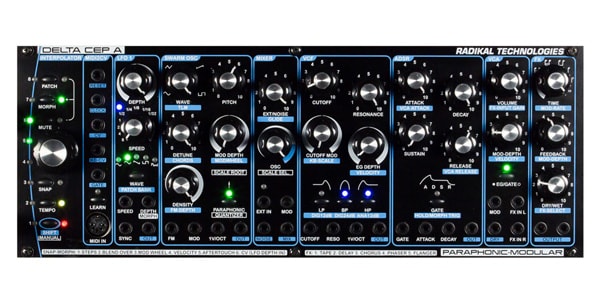
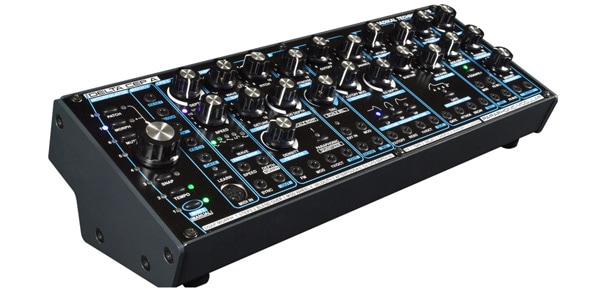


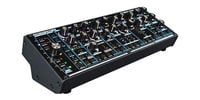
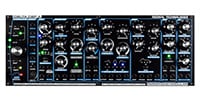
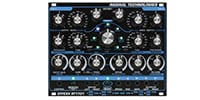
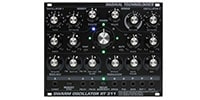
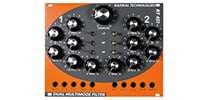
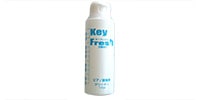 PEARL RIVER / PR21720331
PEARL RIVER / PR21720331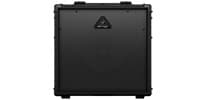 BEHRINGER / K450FX
BEHRINGER / K450FX




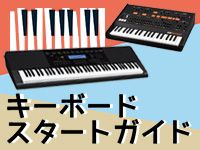

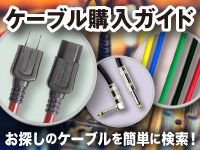


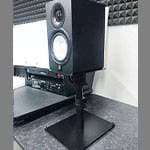







すべてのレビューを見る